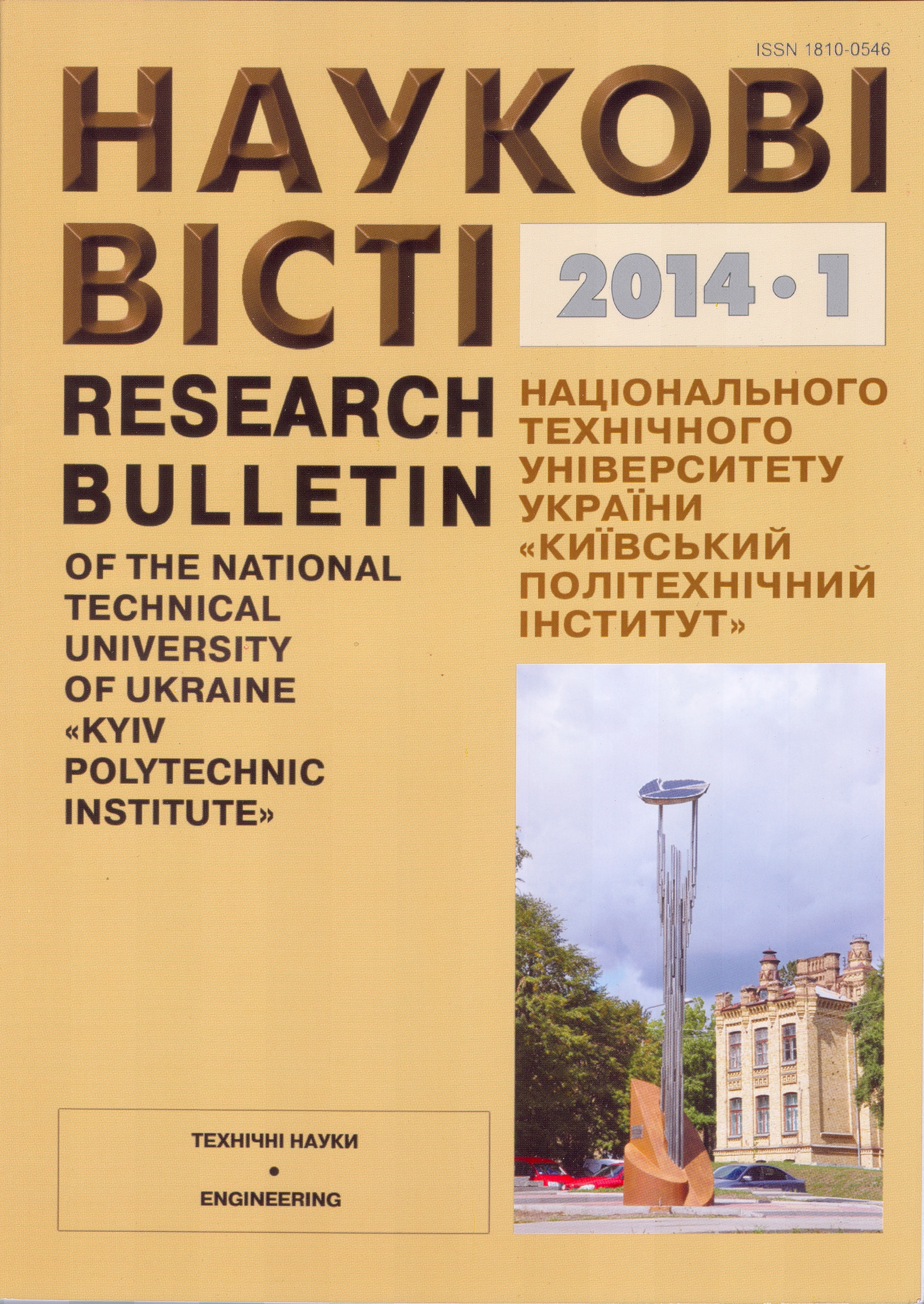Application of Modified Hooke–Jeeves Method for Multi-Objective Optimization
DOI:
https://doi.org/10.20535/1810-0546.2014.1.26533Keywords:
Optimum task, Objective function, Algorithm, Semi-finished leather, TanningAbstract
The task of multi-objective constrained optimization of chrome tanning of semi-finished leather applying the Hooke–Jeeves method is solved. The optimality criterion is formulated in the form of a generalized additive objective function. Local criteria for the objective function are normalized and nondimensionalized. The weighting parameters are obtained on the basis of professional assessments. The algorithm of the modified Hooke–Jeeves method is the basis for the software module, which is implemented using object-oriented programming language Visual Basic for Application. The possibility to work with explicit and implicit constraints in the software module is provided. The developed software module is used to find the optimal values of the generalized objective function. For a low-waste technology of chrome tanning of semi-finished leather with dry chrome tanning agent its mathematical description is obtained and its constraints on the technological parameters of the process are determined. The optimization problem of the dry chrome tanning of semi-finished leather process is solved and the optimal values of the parameters of the tanning process are determined.References
Использование метода Бокса в задачах многокритериальной оптимизации / А.Г. Данилкович, С.В. Брановицкая, С.Г. Бондаренко, О.В. Сангинова // Восточно-европейский журнал передовых технологий. – 2013. – № 3-4. – С. 4–8.
Островский Г.М., Бережинский Т.А. Оптимизация химико-технологических процессов. Теория и практика. – М.: Химия, 1984. – 240 с.
Банди Б. Методы оптимизации. Вводный курс / Пер. с англ. – М.: Радио и связь, 1988. – 129 с.
Інноваційні технології виробництва шкіряних і хутрових матеріалів та виробів: Монографія / А.Г. Данилкович, І.М. Грищенко, В.І. Ліщук та ін.; за ред. А.Г. Данилковича. – К.: Фенікс, 2012. – 344 с.
Екологічно орієнтовані технології виробництва шкіряних та хутрових матеріалів для створення конкурентоспроможних товарів. У 2 ч.: Монографія / А.Г. Данилкович, В.І. Ліщук, В.П. Плаван та ін.; за ред. А.Г. Данилковича. – К.: Фенікс, 2011. – Ч. І. – 437 с.
Данилкович А. Г. Особливості взаємодії гідроксосульфатохромових комплексів з колагеном // Вісник КДУТД. – 2001. – № 1. – С. 151–153.
Данилкович А.Г., Омельченко Н.В., Шахновский А.М. Оптимизация композиции для гидрофобизации эластичных материалов // Вісник ХНУ. – 2012. – № 1. – С. 74–78.
Ліщук В.І., Войцеховська Т.Г., Данилкович А.Г. Використання багатокритеріальної оптимізації для пошуку компромісної області процесу зоління // Легка промисловість. – 2007. – № 1. – С. 37–39.
Данилкович А.Г., Браїлко А.С., Омельченко Н.В. Підвищення якості вторинного покриття шляхом оптимізації покривної композиції // Вісник ХНУ. – 2010. – № 3. – С. 129–134.
Данилкович А.Г. Основы научных исследований в высшем учебном заведении [на укр. языке]. – К.: КНУТД, 2010. – 294 с.
Данилкович А.Г., Петрань А.Г. Розробка технології сухого дублення недвоєної голини та її багатокритеріальна оптимізація // Вісник Держ. акад. легкої пром-ті України. –1999. – № 2. – С. 170–173.
Химмельблау Д. Прикладное нелинейное программирование. – М.: Мир, 1975. – 534 с.
Downloads
Published
Issue
Section
License
Copyright (c) 2017 NTUU KPI Authors who publish with this journal agree to the following terms:- Authors retain copyright and grant the journal right of first publication with the work simultaneously licensed under CC BY 4.0 that allows others to share the work with an acknowledgement of the work's authorship and initial publication in this journal.
- Authors are able to enter into separate, additional contractual arrangements for the non-exclusive distribution of the journal's published version of the work (e.g., post it to an institutional repository or publish it in a book), with an acknowledgement of its initial publication in this journal.
- Authors are permitted and encouraged to post their work online (e.g., in institutional repositories or on their website) prior to and during the submission process, as it can lead to productive exchanges, as well as earlier and greater citation of published work

